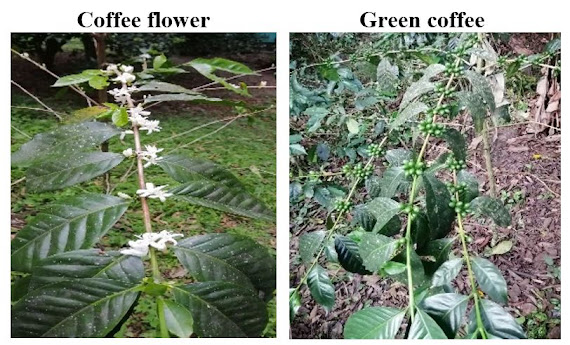Is coffee ultimately good or bad for your health?
Photo: Isaura Bermúdez. Personal archive
When I was a child people used to drink coffee quite frequently. It was the quintessential drink that was drunk for breakfast and to accompany snacks. In addition, a cup of coffee was the typical drink in social activities such as visits and gatherings. In an eminently coffee-growing country like Colombia; where the best coffee in the world is produced, coffee was definitely the queen drink.
Years later, I began to hear stories of people who had been discouraged by their GPs from drinking coffee. The reasons were very diverse. It was said that, as a result of caffeine, coffee was addictive. It also increases bad cholesterol levels; it produces tachycardia, intestinal problems, insomnia, increased nervousness and blood pressure, etc. It was even speculated that coffee turned your teeth yellow.
The situation has changed and currently there are several studies with sufficient scientific rigor that demonstrate the benefits of coffee. The drink is rich in antioxidants, has anti-inflammatory and antithrombotic effects. It also reduces vascular age and type 2 diabetes, stimulates the brain, improves physical performance and accelerates weight loss. Additionally, coffee reduces headaches, reduces the risk of colon cancer, decreases blood sugar levels and helps fight Parkinson’s and Alzheimer’s. Likewise, the drink improves liver function, reduces the possibility of heart attacks and by drinking coffee the body processes glucose better, among other benefits.
Coffee is a delicious drink and if there are no medical reasons to avoid it then you should simply enjoy it. If in doubt, it is always better to consult a health professional, since the impact of coffee on health will depend on the medical circumstances of each individual. Whatever it may be, coffee is the most consumed drink in the world, after water.
The world of coffee is as enormous as it is fascinating. Coffee farmer Isaura Bermúdez points out that it is important to understand the process that coffee goes through from the plant to when the drink is served in a cup. This has a great influence on the aroma, body, flavour and texture of the drink. The following images help us understand this process better.
From the plant to the cup
Photos: Isaura Bermúdez. Personal archive
The way that coffee is washed and dried influences the flavour. Bermúdez explains that coffees which maintains their mucilage and are not washed are sweeter coffees.
Based on recent studies that show that coffee brings health benefits, it is important that we know how to prepare it, to be able to enjoy its flavour and aroma characteristics, among other things. The way coffee is prepared influences the quality of the product that we consumed. If it is prepared well, you will obtain a better flavour and aroma. Bermudez points out that coffee is a fruit that contains sweetness and for this reason it is not necessary to add artificial sweeteners. “There are sweeter coffees, other more floral, others citrus and vinous, others with better body.”
When talking about coffee, body refers to the flavour that remains in your mouth after each sip. “If the coffee has a good body then the flavour remains for longer in your mouth. Furthermore, when the coffee is full-bodied, the smell of coffee remains in the empty cup after the drink has been consumed, meaning that its fragrance lasts”, coffee growing explains.
It is worth mentioning that both decaffeinated coffee and instant coffee have a different process and therefore their content of antioxidants and other benefits is variable.
How to prepare a cup of coffee so that it maintains its properties
Photo: Isaura Bermúdez. Personal archive
To prepare a cup of coffee you need a tablespoon of ground coffee, approximately seven grams. This amount is put into the filter which must be previously moistened with hot water. Then, the hot water is slowly poured. You can see a foam that shows that the coffee is being hydrated and the delicious aroma of the product permeates the place. At this point it is convenient to pause to enjoy the exquisite smell. After a few seconds, continue pouring more water to the desired level.
If prepared in a French press, the process varies a little. While the coffee is preparing, you can capture various fragrances that can be citrus, floral, vanilla, caramel or chocolate. These fragrances are typical of coffee, they are not additives. When serving it, it is advisable to heat the cup so that the coffee maintains its flavour and texture. The cup must be made of ceramic or glass.
Depending on the way it is prepared, you may notice that using the same coffee may vary flavour. Both sweetness and acidity can be highlighted. In any case, everything will depend on the taste of the consumer. There are people who enjoy stronger coffee than others.
Photo: Isaura Bermúdez. Personal archive
The reign of coffee seems to be permanent, since in many countries people consume it daily. Coffee along with tea are the most consumed hot drinks in the world.
Finally, coffee is a drink that can be enjoyed both hot and cold. To quench thirst, it is advisable to add some ice cubes.
Bibliography:
- https://www.mayoclinic.org/healthy-lifestyle/nutrition-and-healthy-eating/expert-answers/coffee-and-health/faq-20058339
- https://www.rush.edu/news/health-benefits-coffee
- https://www.hopkinsmedicine.org/health/wellness-and-prevention/9-reasons-why-the-right-amount-of-coffee-is-good-for-you
- https://www.medicalnewstoday.com/articles/270202
- https://www.elespanol.com/curiosidades/cuerpo-humano/razones-dejar-tomar-cafe/529197539_0.amp.html
- https://federaciondecafeteros.org/wp/listado-noticias/exponen-importantes-beneficios-del-cafe-en-la-salud-humana/
- https://www.idealista.com/news/inmobiliario/internacional/2023/03/29/805184-cafe-o-te-lo-que-mas-se-bebe-alrededor-del-mundo
- https://www.bonka.es/amor-por-el-cafe/de-donde-viene-el-cafe
- https://www.bartalentlab.com/academy/tecnicas-sala-barra/guia-preparacion-cafe
- https://avera.mx/blogs/blog-avera/cuales-son-los-beneficios-de-tomar-cafe









